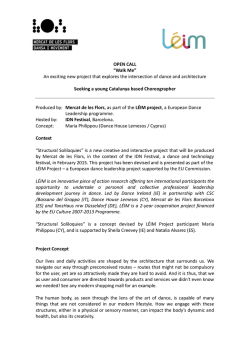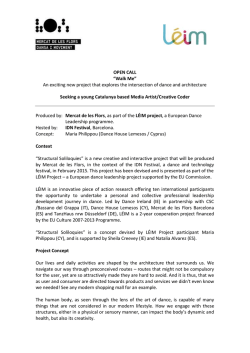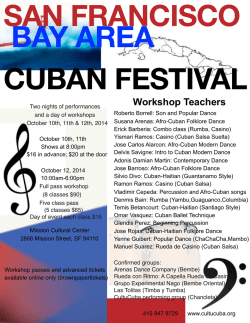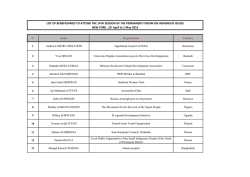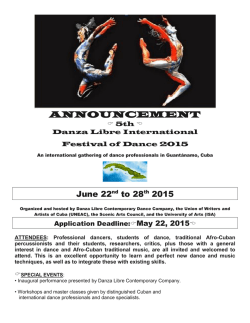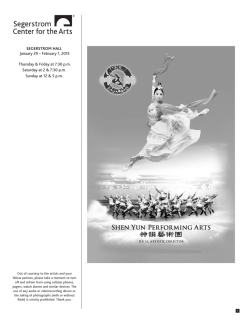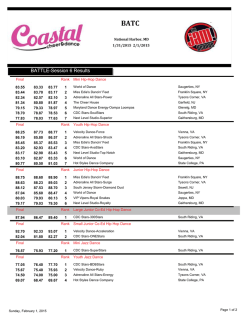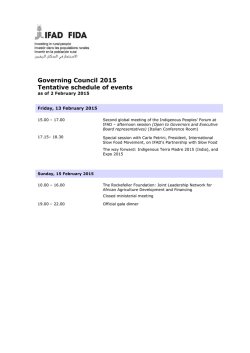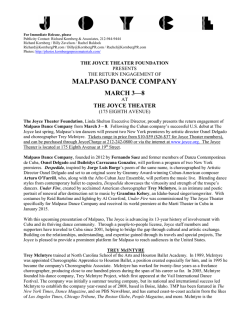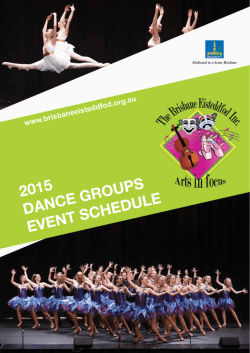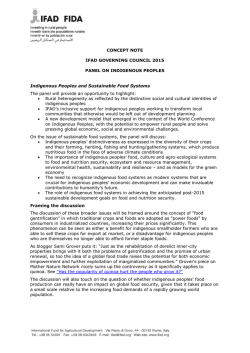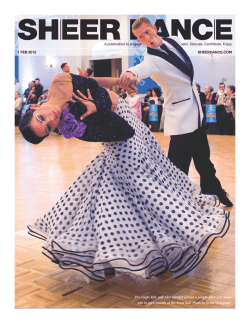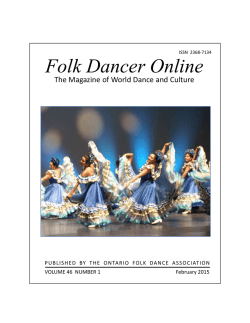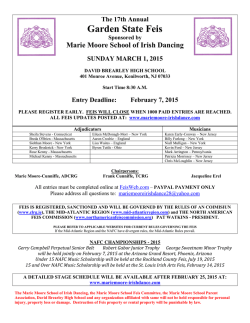
Hispanic Review by Patricia Ybarra
R EV IE WS j 113 too much. As sympathetic critics such as William Rowe have pointed out, Cornejo’s formulation is too neatly dualistic to adequately account for the dense web of textual forms that mark Andean aesthetics, or writing itself for that matter, whose relationship to orality need not be seen as inherently oppressive. Returning again to the question of translation, Lynda Jentsch offers an accurate and functional rendition of Cornejo’s prose. The drawbacks are that it is at times nonidiomatic or overly literal. This is a problem when we encounter Cornejo’s many mixed metaphors, which work well in Spanish but for some mysterious reason not so well in English (compare ‘‘an image of our literature as a boiling pot of blurred systems’’ to ‘‘una imagen de nuestra literatura como hervidero de sistemas algo borrosos’’). There is also the question of scholarly style and the fact that sentences that read well in Spanish may, when translated with too much fidelity, sound turgid or flat in English. In other respects Jentsch does a superlative job of responding to the challenges presented by this text. As I mentioned above, she has had to confront the problem of primary sources that have no published English translations, leaving her with the task, with some knock-out results. The translations of the ‘‘Tragedia del fin de Atahuallpa’’ and of Gregorio Reynolds’s ‘‘Redencio´n’’ are beautiful. This edition also has a significant advantage over Spanish editions: it contains an index, an invaluable addition. Writing in the Air rewards the reader with its wealth of insights into individual works and offers a supremely useful perspective on the past forty years of Latin American literary criticism. Cornejo uses the book’s introduction to reflect on his own evolution as a critic and put some distance between himself and the ambitions of his formidable intellectual cohort, who came to prominence in the late 1960s and 1970s with the ‘‘great epistemological project’’ of naming Latin American identity through its literature, a project that, he tells us, failed. Yet he does not repudiate these attempts. Rather he deftly incorporates them into a ‘‘progressive and organic’’ account of literary criticism and frames them, ultimately, as necessary steps to the present. Whether or not one agrees with this ‘‘progressive and organic’’ account, Cornejo’s impressive honesty and the scope, elegance, and illuminating power of his work remain unsurpassed. E ST EL LE TA RI CA University of California, Berkeley s c o l i e r i , p a u l a . Dancing the New World: Aztecs, Spaniards, and the Choreography of Conquest. Austin: U of Texas P, 2013. xii ! 205 pp. Paul A. Scolieri’s Dancing the New World: Aztecs, Spaniards and the Choreography of Conquest is a richly nuanced and well-researched study of indigenous dance ................. 18661$ $CH5 12-23-14 14:13:05 PS PAGE 113 114 i H IS PA NI C R EV IE W : winter 2015 that investigates the importance of ‘‘writing dance’’ as part of the ‘‘transformation of the Aztec empire into a Spanish colony’’ (back cover). Primarily historiographical, this work is a crucial addition to a growing field of research on indigenous performance. Scolieri’s focus on dance stands apart from scholarship on other forms of conquest performance, which tend to ignore or under-theorize the kinesthetic and choreographic aspects of indigenous performance in favor of theorizing the choreography of colonial governmentality. His analysis powerfully argues not only that dance became a key site in which the ‘‘European self’’ and the ‘‘Indian other’’ were discursively produced, but that the chroniclers ‘‘choreographed history in the sense that they memorialized, justified, lamented, and/or denied their role in the discovery, conquest and colonization of the New World through the Aztec dancing body’’ (2). Scolieri’s study is comprised of a series of five chapters spanning from the discovery period through the late sixteenth century. Each chapter considers a selection of texts that demonstrate an epistemological paradigm in relation to their understanding of Aztec dance. Well aware of the limitations of terms such as ‘‘dance’’ and ‘‘choreography’’ to describe the embodied practices of indigenous people, Scolieri carefully historicizes his terms and offers the complex relationships between danza, baile, arieto, mitote, and others as they functioned epistemologically, without overplaying the alterity of indigenous practice as unknowable. His first chapter, ‘‘On the Arieto,’’ traces the emergence of writing on dance from the discovery period in texts from Christopher Columbus, Amerigo Vespucci, Peter Martyr d’Anghera, Gonzalo Fernandez de Oviedo y Valde´s, and Bartolome´ de Las Casas. It is here that Scolieri confronts these chroniclers’ desires to think of the arieto as a site of collective memory and history, despite the authors’ lack of information about the cultural meaning of said performances. Scolieri performs his analysis of the emergence of dance understood as a form of knowledge through a careful genealogical analysis of how the Taino term arieto was applied to culturally distinct practices by Oviedo, who used it to distinguish embodied acts that commemorate history from those that ‘‘connote a ‘mysterious’ form of idolatry’’ (38). As Scolieri argues, this distinction, although at times inconsistent and misinformed in relation to indigenous ritual practices, nonetheless suggests that Oviedo ‘‘was on the verge of articulating an early modern notion of performance’’ (39). Las Casas’s subsequent desire for the arieto to be a form dedicated to indicting Spanish atrocity is an extension of Oviedo’s project. Las Casas’s ‘‘vagueness’’ about the formal practices of the dances themselves is a legacy that is imparted throughout colonial sources. Scolieri’s greatest contribution here is subtly imparted: that the chroniclers’ desire to think of dance performances as being ‘‘in the place of books’’ might reflect upon contemporary scholars’ desire for indigenous performance to stand in as a form of historiography. We are, after all, just as hampered as ................. 18661$ $CH5 12-23-14 14:13:06 PS PAGE 114 R EV IE WS j 115 many of the missionaries were by the lack of information about the meaning of these practices within indigenous cultures. Chapter two, ‘‘Motolinı´a and the Counterfeit Histories of Dance,’’ traces the legacy of the texts on dance in the Memoriales by Fray Toribio de Benevente ‘‘Motolinı´a’’ through subsequent histories that excerpted and modified them. In this short chapter, Scolieri first analyzes Motolinı´a’s desire to convert indigenous performance into Christian practice by underscoring the indigenous people’s ability to imitate and therefore adopt said practices through performance. Subsequently, Scolieri traces the movements of Motolinı´a’s text, revealing that Francisco de Go´mara’s La conquista de Me´xico and his Historia de las Indias, Francisco Cervantes de Salazar’s Cro´nica de Nueva Espan˜a and Antonio de Herrera de Torsadillas’s Historia general de los hechos de los castellanos en las islas y tierra firme del mar Oce´ano, and the etchings that accompanied the Dutch translations of Herrera’s work, perform the ‘‘accretion, repetition and manipulation of empirical details’’ at the expense of ‘‘the subjectivity’’ in Motolinı´a’s text (54). As a result, the Indian body recedes and the cultural specificity and actual choreographic information disappears in these texts. This erasure articulates the Indian body as an absence while, however inadvertently, referencing the body count of the conquest. Chapter three, which forms the true heart of the book, focuses on Bernardo de Sahagu´n’s writing on dance in the Florentine Codex. The Codex, as Scolieri suggests, is the most important extant repository of knowledge about Aztec performance. It is here that the very problem of representation in Mesoamerican cosmology presents itself in the theorization of the ixiptlas—human representations of Aztec deities. He frames this chapter as one where he thinks through the sacrifices of representation—the absences of meaning—inserted into the texts by Sahagu´n and his indigenous informants. Yet ‘‘Sacrifices of Meaning’’ is the only chapter in which Scolieri ventures into cultural interpretations of Aztec dances. For example, his investigation of Tlacaxipehualitzli reveals how the slaves and captured warriors forced to wear the flayed skins of sacrifice victims were transformed through a captor–captive dance from being a ‘‘possession’’ to an aspect of the self. Because the captor danced as the captive was placed on the gladiatorial stone to be killed, the ‘‘captive became the captor’s very being’’ (75). Similarly, he asserts that during the Ochpanitzli and Tititl festivals, women’s terror as well as their body parts ‘‘were trafficked in sacred choreographies meant to empower men’’ (85). Ultimately, Scolieri claims that these dances reveal the power of choreography as a mode of surveillance and power in the Aztec empire inasmuch as the codex embeds a precious few subjective responses that gesture to the recognition of performance as a mode of exposing that violence sustained the social order. This chapter, then, opens up a rich investigation on the very concept of standing in ................. 18661$ $CH5 12-23-14 14:13:06 PS PAGE 115 116 i H IS PA NI C R EV IE W : winter 2015 for another which is so crucial to understanding the epistemology of indigenous performance. This epistemology is potentially quite different from European stagings of self and other that forcibly discouraged the recognition of the other as part of the self. In chapter four, the volume returns to historiographical analysis, considering the role of dance in narrating the massacre at Toxcatl. Scolieri reveals how the staging of a ceremonial dance reflected the political investments of the writers who argued either that the dance was peaceful and thus the massacre that occurred during them was an atrocity (Las Casas, Bernal Dı´az), or that the percussive and kinesthetic gestures of the dance fueled the massacre as a necessary preemptive strike (Go´mara). Subsequently, Scolieri elaborates on how DeBry’s etchings depicting the massacre restage the conquest as a late Medieval dance of death, allegorizing the event in relation to Christian cosmology. To his credit, Scolieri also analyzes indigenous accounts of the massacre to reveal how their authors also used structures from cosmology, namely the representation of the falling of victims in reference to the falls of Coyolxauqui, Nanauatzin and the Toltec in Aztec myth, so as to stage the Spanish Conquest as a ‘‘political transformation’’ rather than ultimate defeat (121). Scolieri’s final chapter explores how both late-sixteenth-century writers staged Aztec dances in their writings as a way to prove the success of Christian conversion. In addition, legislation against these performances attempted to control dance with the same goal in mind: replacing indigenous ritual practice with Christian worship. In the end, Scolieri posits that friars like Diego Dura´n ultimately argued for indigenous dance both as a mode of discipline and civilization and as proof of that order. This chapter left me wondering, however, if Dura´n’s creation of order through dance echoes Las Casas, Oveido, Sahagu´n and Motolinı´a’s obsessions with synchronicity more than has previously been thought. Thus, reading this chapter against the first three in the book raises provocative questions about how we periodize colonial writing as well as explicating how the legacy of writing about post-Conquest dance deviates from earlier incarnations. Scolieri’s conclusion acts as a coda, opening up the deep relationship between dance and death in all of the periods he studies. Dancing the New World is an excellent volume that, alongside its rigorous discursive and historiographical analysis, asks important questions about representation, mimesis, and depictions of dance as death within New Spanish cultural texts. Scolieri offers a new and long overdue look at many of the colonial chronicles and codices that form the bedrock of scholarship on colonial Mesoamerica. This volume will be important for generations of scholars of performance in the Americas. The introduction provides a nuanced but succinct road map to both early modern dance history and Spanish colonial discourse and practice, making ................. 18661$ $CH5 12-23-14 14:13:07 PS PAGE 116 R EV IE WS j 117 the book accessible to multiple audiences. In addition, its lucid prose, excellent appendix of colonial writings on dance in English translation, and its gorgeous illustrations and reproductions will assure that its content reaches nonspecialists. P AT RI CI A Y BA RR A Brown University ................. 18661$ $CH5 12-23-14 14:13:07 PS PAGE 117
© Copyright 2025
